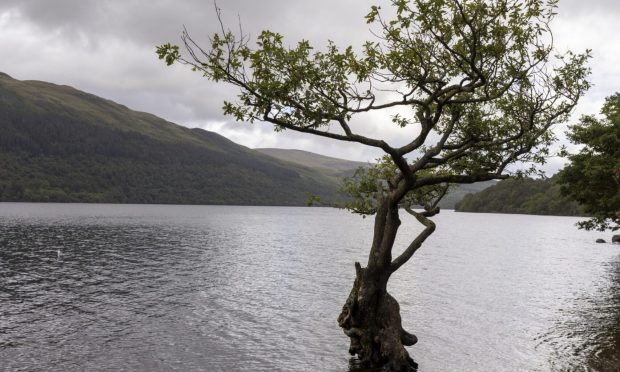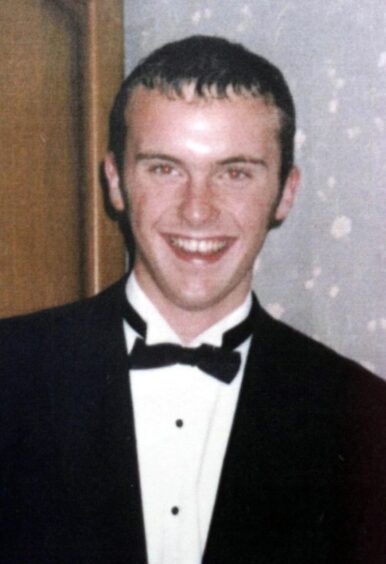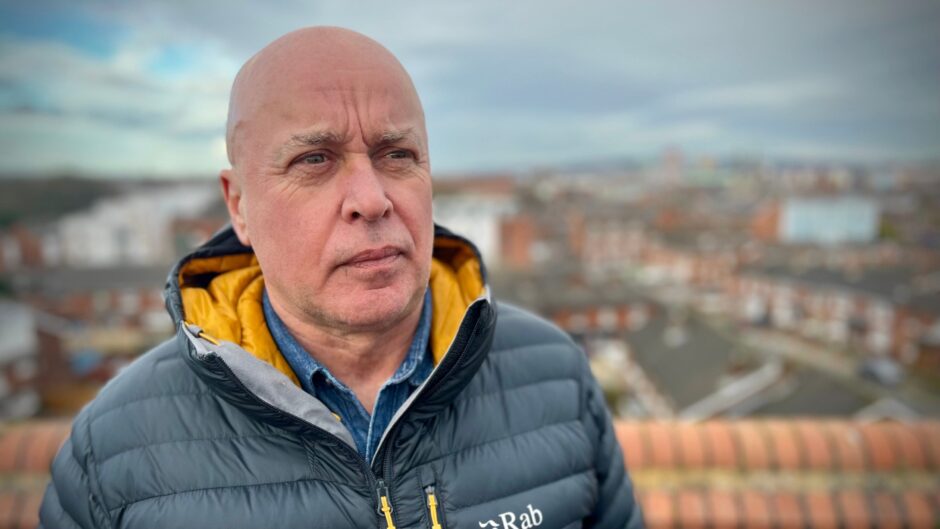
A new documentary reveals how Britain’s criminal justice system allowed Limbs in the Loch killer William Beggs to go free to kill and kill again.
Despite his manipulation of the system, his inability to stop boasting or resist sick fantasies of finding young, drunk teenagers to prey on were the final undoing of the killer.
A new six-part documentary examines how Beggs played the system and reveals he could not stop himself bragging about meeting a “sweet young boy” while driving around with the body of victim Barry Wallace in his car.
Recalling his chilling phone call with Beggs and comparing newspaper headlines containing the timeline of missing teenager Barry, who disappeared in December 1999 while waiting for a taxi from a work Christmas party, the killer’s former friend, Richard Bache, contacted police.
Beggs was known to boast to friends about his sick fantasies about young men.
In a million-to-one chance, police diving teams had conducted a training session in the freezing waters of Loch Lomond days after Barry went missing, discovering bin bags submerged in the water. Inside the bags they found severed limbs.
Nine days later and 60 miles from Loch Lomond, dog walker Margaret Burley discovered another bin bag on the beach at Barassie, in Ayrshire, containing Barry’s head.
Bache said: “The whole thing plays around in my head again and again.
“It didn’t make sense that this friend, who I’d spent so many good times with, could do such terrible violence.
“But I knew when I received that phone call from Beggs, he was en route somewhere in the car, and he was really happy with himself as he tells me that he met a really sweet young man the night before. He just couldn’t resist telling me. I told police I would give them whatever help they needed.”
In the documentary, police officers who worked on the case describe how Barry died shackled with handcuffs to his feet and hands. He struggled desperately to get free before Beggs callously killed him, dismembered his body and disposed of him, bit by bit.
Police immediately suspected Beggs because of previous behaviour but by the time they acted, the killer had already fled to the Netherlands.
Beggs managed to stay free, playing the legal system and toying with justice in a sinister game of cat and mouse which he would eventually lose, ending the murderous career of an undoubted serial killer in the making.
As he continues to languish in jail, Beggs amuses himself by bringing repeated legal actions which have cost taxpayers around £1 million in legal aid.
Born in Lurgan, County Armagh, Beggs’s father was a college lecturer and his mother a headmistress, and his family was respected within the community. Despite gaining healthy exam results at school, Beggs’s first known attack was as a teenager, cutting another boy with a knife during a camping trip.
After a strict Baptist upbringing in the tiny village of Moira in County Down and a Quaker education, Beggs emerged as an adult driven by simmering perversions and stark contradictions. He played the church organ on Sundays and was an outspoken supporter of the Reverend Ian Paisley’s Save Ulster from Sodomy campaign.
By night, Beggs was a dangerous sexual predator, preying on young gay men.
With a sadistic fascination with piquerism, the sexual interest of piercing the skins of his victims with razor blades, his predilections eventually led to Beggs being hounded out of Northern Ireland by UVF paramilitaries. He never returned.
Settling in Middlesbrough, Beggs continued to indulge his obsession with knives and razors and was known to quote the Bible.
His first victim was gay loner Barry Oldham, 29, in 1987.
Beggs is believed to have slashed his throat and then attempted to cut off his limbs, his sickening signature. He dumped parts of Barry’s body in the remote Yorkshire moors.
Beggs was convicted at Teesside Crown Court of the young man’s murder and of two other wounding charges.
After spending just two years in jail, Beggs and his lawyers successfully appealed, claiming that the other charges brought against him had prejudiced the jury, leaving him free to strike again.
Beggs settled in Kilmarnock, winning a job as a council housing officer after lying on his CV. He moved to Doon Place, the flat where he took Barry Wallace’s life.
But before that awful murder, Beggs also attacked another young man, Brian McQuillan, who believed he only escaped death by throwing himself out of a window. He warned Beggs would strike again.
Beggs was sentenced to six years but freed after just three.
Beggs worked at a call centre and was studying for a doctorate at Paisley University, sometimes lecturing there and at De Montfort University in Milton Keynes by the time he attacked Barry Wallace, assaulting him so brutally that medical witnesses said the teenager may have died from shock.
Forensic teams had to virtually strip Beggs’s flat at Doon Place because of extensive attempts to cover up his awful crimes.
They eventually discovered evidence of Barry Wallace’s blood and sweat stains from his killer.
Patrick Greg, author of the book The Limbs in the Loch Killer, tells filmmakers just how dangerous Beggs is.
Limbs in the Loch: Catching a Killer is on BBC Scotland from 10pm on November 5 with all episodes available to stream on BBC iPlayer.

Enjoy the convenience of having The Sunday Post delivered as a digital ePaper straight to your smartphone, tablet or computer.
Subscribe for only £5.49 a month and enjoy all the benefits of the printed paper as a digital replica.
Subscribe
 © Firecracker/BBC
© Firecracker/BBC